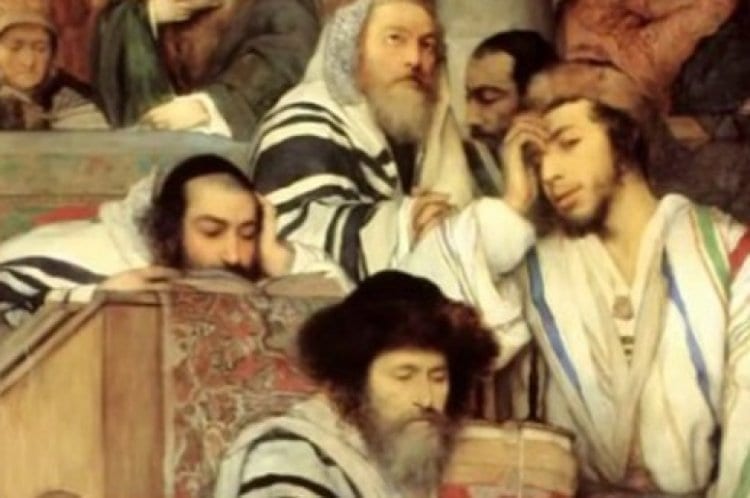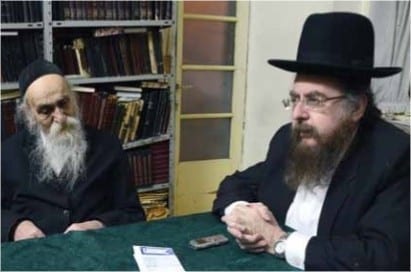One of the delightful perks of traveling with my husband, shlita, is that he conducts the shiur that he gives every morning in shul, from wherever we are, over the phone. That way, the regular attendees don’t miss their daily course of study, and I get to enjoy my morning cup of coffee while drinking in some wonderful Torah insights. A few days ago, my husband addressed Rashi’s comment at the beginning of Sefer Vayikra that focuses on the spaces the sofer (scribe) inserts in the Torah scroll to set off textual paragraphs from one another. Rashi quotes a Chazal that explains that the gaps between the parshiyos were to give Moshe Rabbeinu revach, space, to reflect on what he had just learned. It is astonishing, he said, that Moshe, who was gifted by Hashem with the knowledge of the entirety of Torah—Moshe, the quintessential student learning from the consummate Teacher, the Ribbono Shel Olam—would need “space” for purposes of contemplation. It must be, my husband suggested, that the Torah is telling us something about the unique approach necessary to the study of Torah. The understanding communicated is that knowledge and wisdom, if it is to be relevant, has to be integrated into our individual person, that we have to make it our own. Torah learning is not generic, such that one-size-fits-all. Indeed, even at Har Sinai, the Divine revelation was experienced differently by every person. Insofar as every human being is a world onto himself, with singular attributes of character, everyone experienced Hashem’s presence at his or her particular level.

By extension, when we examine our own relationship to Hashem and His mitzvos, we must respect the fact that our perspective, at any moment, is colored by who we are today. Yesterday, given the nature of our thinking and circumstances then, we might have gleaned a message that is no longer as germane to our lives as the message that might emerge at the current moment. We must carve out time and “space” from our busy schedules to take a fresh look at what should be the implementation of the more significant values that drive our existence. One such issue is the upcoming Yom Tov of Pesach. Having been privileged to celebrate this holiday of “freedom” many times before, there is an inclination to ride on the coattails of “same old, same old” attitudes.This is especially true for women who for the most part have little time to breathe, let alone “time-out space” for contemplation and reflection. That being said, there are illuminating insights that are not to be ignored, that are elegantly simple and potentially transformative.
There is a classic definition of freedom, that of charus al haluchos, referring to the Aseres Hadibros, the Ten Commandments, engraved upon the tablets of stone. Our Sages insist that the letters of the text, generally read as charus, which means engraved, can also be read as cheirus, meaning freedom upon the stone tablets. Counterintuitive as it might be, Chazal want us to understand that while Torah is indeed a discipline that by definition is restrictive, at the end of the day it is the only path to freedom. An analogy that captures this truth is the following: There are violin strings lying before me on the table, which if I choose to manipulate, are free to move in any direction. It is, however, only when they are bound to a violin and no longer free to move randomly, that they are, for the first time, free to be the source of great music. Similarly, being “free” in secular terms means license to do whatever we please, but sadly, we are not “free” to sing. By binding ourselves to the instrument and discipline of Torah and mitzvos, our options become limited, but we are freed to sing the music of our souls. Charus, the dictates engraved in the stone, become cheirus, freedom upon the stone.
Concurrent with this principle is the question we should ask ourselves every morning when we recite the brachah of “shelo asani aved,” thanking Hashem that “He has not made me a slave.” The commentaries note that the most treacherous form of slavery is the one that is self-imposed. In our times, we might consider among the various forms of bondage the tyranny of technology: cell phones, iPhones, iPads, computers, Internet, etc. Unquestionably, these gadgets provide great advantages; indeed, they are progressively becoming virtual necessities. The question we need to address, however, is whether we are “on top of our game.” We have all observed the familiar scenario of people talking and texting on their cell phones incessantly, ignoring everything around them—family, friends, business associates, etc. In my experience, many marriages have suffered because of the inability to self-limit these all too captivating distractions. Good people get sucked in. There is an addictive quality to this technology, and attention to priorities invariably suffers.
My husband related that whenever he met his esteemed elderly cousin, Rabbi Chaim Twerski z”l, the much respected chaplain of Maimonides Hospital of Brooklyn, there would always be a cigar dangling from his mouth. On one occasion, during the month of Elul, he bumped into Rabbi Chaim and there was no cigar in sight. Much surprised, my husband questioned him about the absence of the cigar. Rabbi Chaim’s enlightened response was that for one month out of the year, he would give up his enjoyable habit so that he could objectively ascertain who, in fact, was in charge, he or the cigar. Who was the master and who was the slave? This season of Pesach, the holiday of freedom, when the hashpaos, the Divine energies of liberation are made available to us, is a propitious time to take that revach, that space, to assess and evaluate our personal state of servitude. We should look at what fuels our daily lives. Are we in the driver’s seat, at the controls? In all of our pursuits we need to ask ourselves the very sobering question of who is the master and who is the slave?




